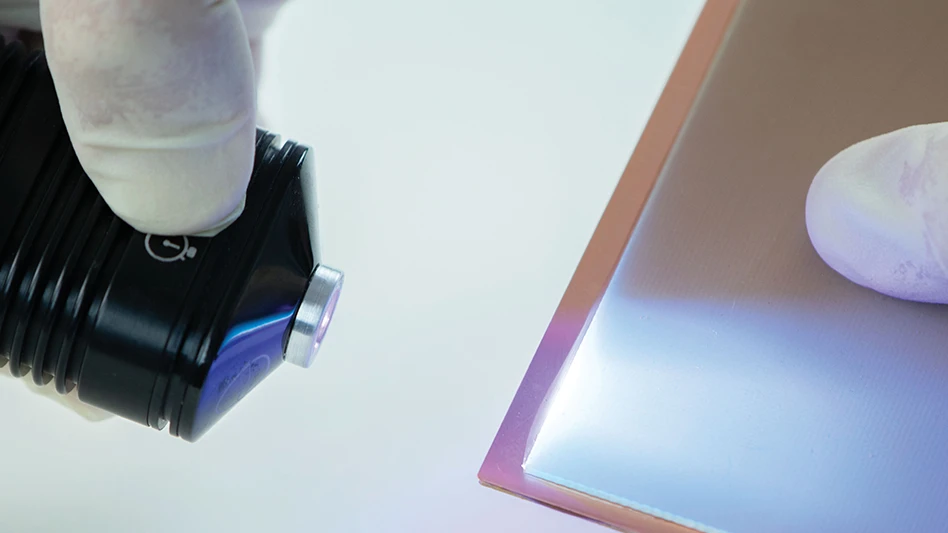
Continued research and development advancements of medical technology and precision measurement/motion control systems have provided exciting developments for the industry, including the GammaPod, a solution for breast cancer radiotherapy. Patients treated on Xcision Medical System’s GammaPod will likely need between one to five treatments to eradicate certain breast cancers, compared to the current six-week, five-days-a-week course of radiation.
This system, which received FDA 510(k) clearance in the U.S. in December 2017, is installed at the University of Maryland Medical Center in Baltimore and UT Southwestern Medical Center in Dallas, Texas, where patients will begin treatments this year. The machine houses a moving bed for a prone patient and a two-cup system that holds and stabilizes the breast with the target. This provides a targeted and powerful amount of radiation using 25 Cobalt 60 sources, administering less radiation to normal tissue.
“The emergence of accelerated partial breast irradiation (APBI) as a breast cancer treatment option is an example of personalized medicine replacing a one-size-fits-all approach,” explains Xcision’s Vice President of Engineering Peter Maton. “This has the potential to change the way early detected breast cancer is treated, to the point of sometimes eliminating surgery altogether, and at a lower cost than traditional procedures.”
Accuracy, redundancy
The bed and cup system’s movement uses precise motor controls, gear boxes, and linear bearings – controlled by five linear encoders on the bed and two rotary encoders on the bowl system. Heidenhain Corp.’s encoders provide absolute position values as soon as they are switched on. If the system does not have power, accurate values are translated and received once the system is on again.
“Heidenhain came out first with the absolute encoder system, which has allowed us to minimize the uncertainty of the zeroing process otherwise required for incremental encoders and the time-consuming nature of it,” Maton explains.
Absolute encoders provide a secondary positional measurement to verify correct positioning that ensures accuracy of the delivered dose. Direct mounting and absolute calibration provide real-time quality assurance of the bed positioning system.
“The motion control and precise measurement aspects of the GammaPod are critical to its success,” Maton says, “Our design incorporates the very best of both.”

A key design goal of the GammaPod system is to create practical and comfortable means of prone treatment. A patient approaches the GammaPod bed while it is vertical, steps on, and positions the breast cup which locks to the bed. The bed then gently glides into the horizontal position.
With a patient lying face down on the machine bed, rather than on their back, the breast to be treated naturally falls further away from the chest wall, helping minimize dose to organs in that region.
The five absolute LIC 4100 linear encoders within the GammaPod table monitor the table’s position, verifying the patient’s position. The linear encoders mount directly on the two table-support columns. Xcision separately monitors the height and lateral offset of the table, and the fifth encoder monitors the length axis.
Rigidly mounting encoders to the table, “gives us an absolute stable positioning readout because they are directly mounted to the things we are controlling. With that, we have accurate confirmation of X, Y, Z position to ensure the cup is in the correct location for the radiation,” Maton adds.
The LIC 4100 exposed encoders permit absolute position measurement throughout large traverse paths (up to 2m), at high accuracy and at high traversing speed, although Xcision only requires around 400mm of travel.
The absolute nature of the linear encoders is critical because it detects primary system failure or calibration error. According to Maton, the redundant secondary system confirms that the patient’s position is free of failure or calibration errors, ensuring treatment of the correct location in the breast.

“We control the radiation on/off and beam size by relative rotation of two bowls, one holding the sources and the other holding the blockers/collimators. We use two drive systems that must be controlled within a tight tolerance,” Maton explains.
Two Heidenhain EQN 437 absolute rotary encoders on the drive systems provide independent confirmation of alignment accuracy.
“The redundant check provided by the rotary encoders ensures that we know the radiation sources are always in the right position, relative to the blockers/collimators,” Maton says. “In real-time, the readings are being checked in primary and secondary systems. We started off with relative magnetic encoders in our design, but they were not satisfactory. First, we had the problem of having to rotate very slowly to find the zero point at each power up, and second, it turned out they weren’t linear enough for our needs. The absolute encoders were more suitable to drive our system.”
Treatment delivery
The GammaPod’s two-cup system encapsulates and constrains the shape of the breast for treatment. Suction between the cups gently pulls the breast to completely fill the inner cup and immobilize it. The patient is imaged on a computed tomography (CT) scanner, then without removing the cup, moved to the treatment device, and the cup is locked into the treatment bed. A copper wire (a fiducial marker) embedded in the cup is used to establish a 3D coordinate system for treatment planning to create the bed position sequence (control points).
The focused and concentrated dose of radiation is delivered according to this sequence. The focus allows the dose to fall off sharply outside the target volume, reducing dose to healthy breast tissue, organs such as the heart and lungs, and the skin. The decrease in collateral dose minimizes unwanted exposure and side effects.
Planned treatment, based on the established coordinate system and motion control, allocates a specific amount of time for the radiation beams to remain in each position to distribute the correct dose. The design matches a planned dose and the delivered dose within 1mm.
Conclusion
“The long-term goal of the GammaPod is to eradicate early stage breast cancers in one treatment in some cases,” Maton adds. “We now see that possibility.”
Advancements in measurement and motion control are enabling and enhancing technologies in new ways every day. The GammaPod is just one.
“The Heidenhain encoders in the GammaPod have proven critical to our system, and we are very pleased with their reliability and the results,” Maton comments. “The documentation that accompanied them is also very good and well defined, which is extremely helpful to a design engineer. We’re excited to be bringing the GammaPod to market.”

Heidenhain Corp.
www.heidenhain.us
Xcision Medical Systems LLC
www.xcision.com

Explore the September 2018 Issue
Check out more from this issue and find your next story to read.
Latest from Today's Medical Developments
- Kistler offers service for piezoelectric force sensors and measuring chains
- Creaform’s Pro version of Scan-to-CAD Application Module
- Humanoid robots to become the next US-China battleground
- Air Turbine Technology’s Air Turbine Spindles 601 Series
- Copper nanoparticles could reduce infection risk of implanted medical device
- Renishaw's TEMPUS technology, RenAM 500 metal AM system
- #52 - Manufacturing Matters - Fall 2024 Aerospace Industry Outlook with Richard Aboulafia
- Tariffs threaten small business growth, increase costs across industries





